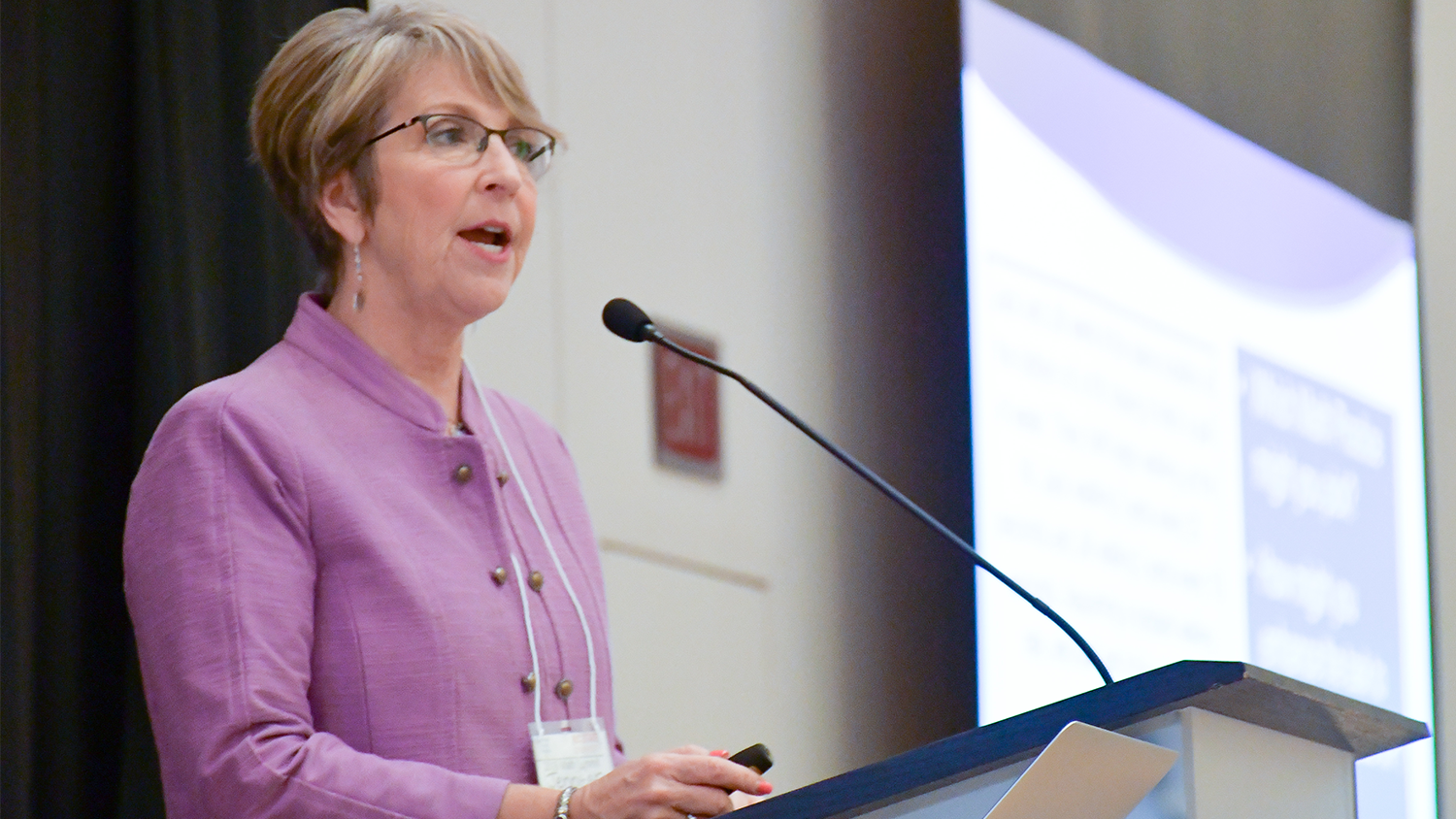Teachers Focus on Implementing Task Based Instruction at NC State and Triangle Math Alliance Summit

Jennifer Bay-Williams, Ph.D., started off a Tuesday morning by asking a room full of educators to complete five basic math problems. The equations were simple. But when she polled the group to determine how each person found the correct answer, it was clear that many used different methods to achieve the same result.
The exercise was intended to prove that teachers need to focus less on showing students how to solve a problem in a particular way and focus instead on helping them achieve strategic competence and flexibility in mathematics.
During her keynote speech on the first day of the NC State and Triangle Math Alliance Summit, which focused this year on implementing task based instruction, she outlined eight strategies educators can employ to ensure classroom tasks are supporting competence and flexibility.
“No single person can take on that many strategies all at once, but I think everyone is hoping to do at least one or two things and then, if they get themselves fluent in that strategy, they can move on and get fluent in another so that collectively, over time, they get better at focusing on strategic competence,” said Bay-Williams, a professor at the University of Louisville and president of the Association of Mathematics Teacher Educators.
This is the third year the Math Summit has been held at NC State, in partnership with SAS and public schools in Wake, Chapel Hill, Durham, Orange and Johnston counties.
The two-day event, held Aug. 6 and Aug. 8, featured more than 50 break-out workshops where educators engaged in discussion and listened to presenters from NC State, local public schools, the Department of Public Instruction and other UNC System universities.
“Our teachers often don’t have the time to take off from the regular school day in order to go and get professional development, so when we have events like this in the summer, it gives them the opportunity to get that professional development. It’s close to home and they get to see teachers from other districts and share their ideas,” said Sonia Dupree, senior administrator for high school math in the Wake County Public School System.
More than 600 elementary and secondary educators attended over the course of two days to learn more about best practices in mathematics, new ideas and collaboration in the classroom.
“I think it gives us an opportunity to share and listen,” said Jasmine Adams, a teacher at Rogers-Herr Middle School in Durham. “We don’t always have the opportunity during the year to get around more educators, especially outside of our district.”
Eight Strategies on Implementing Task-Based Instruction from Jennifer Bay-Williams’ Keynote Speech
- Word questions strategically by using plural forms, tentative language and positive presuppositions to discuss mathematical strategies. “This is just a matter of tweaking the questions we’re posing so that we’re inviting strategic competence and fluency.”
- Pick one math practice to focus on as a starting point to help students uncover structures, patterns and quantitative relationships. “There’s a fine line between telling too much and taking their thinking away and just sparking some ideas so they can have access to those representations.”
- Strategize the first steps of a problem to help students understand how to approach mathematical equations. “We don’t actually have to finish a problem to learn from it.”
- Use worked examples to show new or uncommon strategies for solving a problem and to highlight common errors. “A correct worked example is a really nice way to introduce a strategy. If one of your own students has done something unusual to solve a problem, it’s a fantastic way to increase their confidence about math.”
- Use P.I.C.S. (Procedure, Illustration, Concept and Situation) to help students connect concepts and procedures through pictures and stories before moving to abstract symbols. “I use it as a planning tool in a unit plan to make sure there is attention to all four boxes to get us out of our procedure obsession and make sure we’re connecting it to other things.”
- Compare solutions by showing students two approaches to solving the same problem and allowing them to pick which one is easiest. “There has been extensive research done specific to algebra and the increase in flexibility that students have when two problems are posed side-by-side.”
- Compare problem sets/strings to help students understand relationships and how to manipulate equations to make it easier to find solutions. “You’re just raising their strategic competence regarding what they would do first.”
- Ask students when they believe they will be able to use a particular strategy and for which mathematical problems it would be most effective. “The ‘when’ helps push us up to the highest level of Bloom’s Taxonomy and helps us to be strategically competent.”
- Categories:


